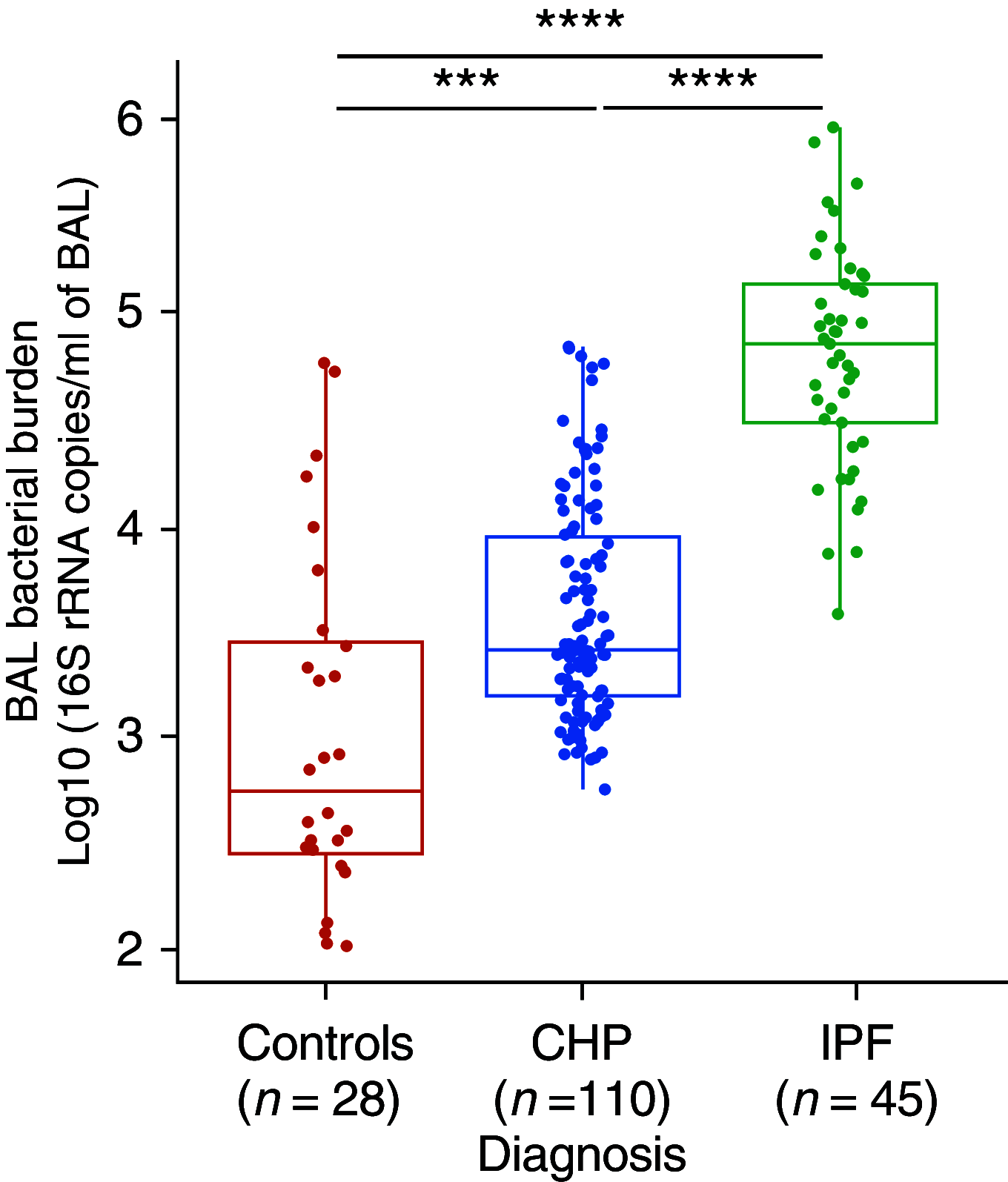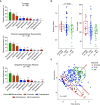The Respiratory Microbiome in Chronic Hypersensitivity Pneumonitis Is Distinct from That of Idiopathic Pulmonary Fibrosis
- PMID: 32692582
- PMCID: PMC7874329
- DOI: 10.1164/rccm.202002-0460OC
The Respiratory Microbiome in Chronic Hypersensitivity Pneumonitis Is Distinct from That of Idiopathic Pulmonary Fibrosis
Abstract
Rationale: Chronic hypersensitivity pneumonitis (CHP) is a condition that arises after repeated exposure and sensitization to inhaled antigens. The lung microbiome is increasingly implicated in respiratory disease, but, to date, no study has investigated the composition of microbial communities in the lower airways in CHP.Objectives: To characterize and compare the airway microbiome in subjects with CHP, subjects with idiopathic pulmonary fibrosis (IPF), and control subjects.Methods: We prospectively recruited individuals with a CHP diagnosis (n = 110), individuals with an IPF diagnosis (n = 45), and control subjects (n = 28). Subjects underwent BAL and bacterial DNA was isolated, quantified by quantitative PCR and the 16S ribosomal RNA gene was sequenced to characterize the bacterial communities in the lower airways.Measurements and Main Results: Distinct differences in the microbial profiles were evident in the lower airways of subjects with CHP and IPF. At the phylum level, the prevailing microbiota of both subjects with IPF and subjects with CHP included Firmicutes, Bacteroidetes, Proteobacteria, and Actinobacteria. However, in IPF, Firmicutes dominated, whereas the percentage of reads assigned to Proteobacteria in the same group was significantly lower than the percentage found in subjects with CHP. At the genus level, the Staphylococcus burden was increased in CHP, and Actinomyces and Veillonella burdens were increased in IPF. The lower airway bacterial burden in subjects with CHP was higher than that in control subjects but lower than that of those with IPF. In contrast to IPF, there was no association between bacterial burden and survival in CHP.Conclusions: The microbial profile of the lower airways in subjects with CHP is distinct from that of IPF, and, notably, the bacterial burden in individuals with CHP fails to predict survival.
Keywords: 16S; fibrosis; lung microbiota.
Figures



Comment in
-
The Lung Microbiome in Health, Hypersensitivity Pneumonitis, and Idiopathic Pulmonary Fibrosis: A Heavy Bacterial Burden to Bear.Am J Respir Crit Care Med. 2021 Feb 1;203(3):281-283. doi: 10.1164/rccm.202007-2822ED. Am J Respir Crit Care Med. 2021. PMID: 32791003 Free PMC article. No abstract available.
References
-
- Selman M, Pardo A, King TE., Jr Hypersensitivity pneumonitis: insights in diagnosis and pathobiology. Am J Respir Crit Care Med. 2012;186:314–324. - PubMed
-
- Campbell JM. Acute symptoms following work with hay. Br Med J. 1932;2:1143–1144.
-
- Morell F, Villar A, Montero MA, Muñoz X, Colby TV, Pipvath S, et al. Chronic hypersensitivity pneumonitis in patients diagnosed with idiopathic pulmonary fibrosis: a prospective case-cohort study. Lancet Respir Med. 2013;1:685–694. - PubMed
Publication types
MeSH terms
Substances
Grants and funding
LinkOut - more resources
Full Text Sources
Other Literature Sources
Molecular Biology Databases

